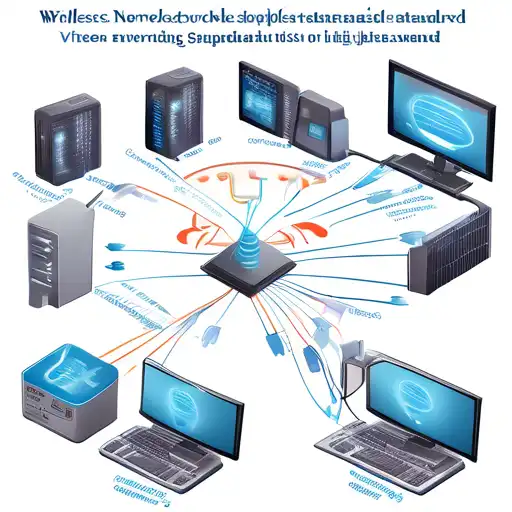Introduction to Wireless Networking Standards
Wireless networking has become the backbone of modern communication, enabling devices to connect and share data without the need for physical cables. Over the years, various wireless networking standards have been developed to meet the growing demands for speed, reliability, and security. This article delves into the most significant wireless networking standards, their evolution, and their impact on technology today.
The Foundation of Wireless Networking: IEEE 802.11
The Institute of Electrical and Electronics Engineers (IEEE) 802.11 standard is the cornerstone of wireless networking, commonly known as Wi-Fi. Since its inception, the standard has evolved through several iterations, each improving on speed, range, and security. The most notable versions include 802.11b, 802.11g, 802.11n, 802.11ac, and the latest, 802.11ax (Wi-Fi 6).
Key Features of Wi-Fi Standards
- 802.11b: Introduced in 1999, it offered speeds up to 11 Mbps.
- 802.11g: Launched in 2003, it increased speeds to 54 Mbps.
- 802.11n: Released in 2009, it introduced MIMO technology, boosting speeds up to 600 Mbps.
- 802.11ac: Debuted in 2013, it supported speeds up to 1.3 Gbps.
- 802.11ax: The latest standard, offering speeds up to 10 Gbps and improved efficiency in crowded areas.
Bluetooth: The Standard for Short-Range Wireless Communication
Bluetooth technology is another pivotal wireless standard, designed for short-range communication between devices. It has evolved from Bluetooth 1.0 to the current Bluetooth 5.2, with each version enhancing data transfer rates, range, and energy efficiency. Bluetooth is widely used in headphones, speakers, and IoT devices.
The Rise of 5G: Revolutionizing Mobile Networking
5G is the latest in mobile networking standards, promising unprecedented speeds, lower latency, and the capacity to connect more devices simultaneously. It is set to transform industries by enabling advancements in IoT, autonomous vehicles, and smart cities.
Choosing the Right Wireless Standard
Selecting the appropriate wireless standard depends on the application. For home networking, Wi-Fi 6 offers the best performance. For connecting peripherals, Bluetooth is ideal, while 5G is reshaping mobile connectivity. Understanding these standards helps in making informed decisions for personal and professional use.
Conclusion
Wireless networking standards have significantly evolved, offering faster speeds, better security, and more reliable connections. As technology advances, these standards will continue to play a crucial role in shaping the future of communication and connectivity.
